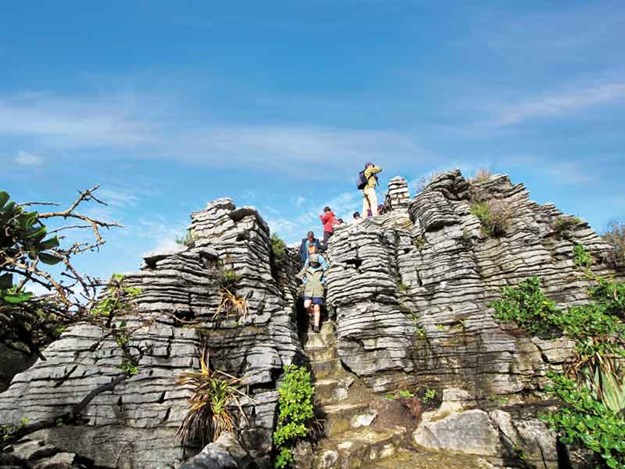
Road trips are an awesome way to see our beautiful country, and a recent adventure on West Coast and upper South Island roads saw us revisiting our favourite places of the past and exploring new territories.
Punakaiki pleasures
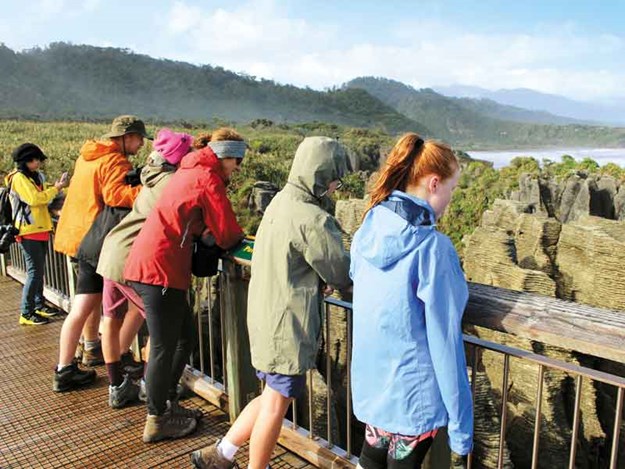
There’s nothing like 13 hours of travel to get the ball rolling, leaving Palmerston North at 5.15am and reaching Punakaiki in the late evening.
Punakaiki, and the coast either side, has always been one of my favourite parts of the West Coast, with its wild beaches and fascinating geology.
As rain bucketed down overnight, we were prepared to explore in raincoats the next morning, but the day dawned sunny and warm, the ocean wild and fearsome—perfect for a visit to the iconic Pancake Rocks.
Pancake Rocks
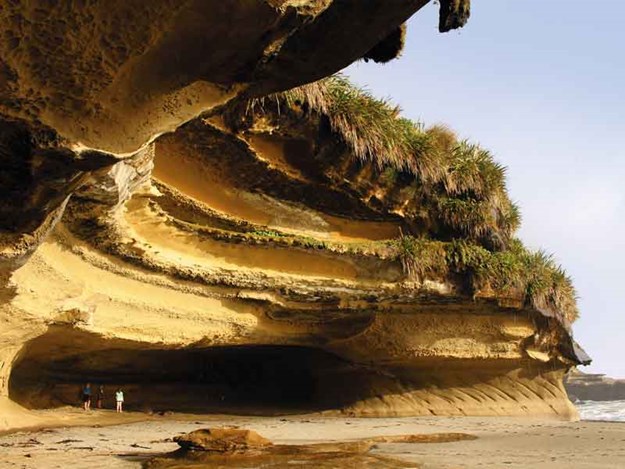
The Pancake Rocks are so called because of their intriguing layered formations, looking like a giant stack of pancakes. These pillars of pancakes tower out of the ocean creating blowholes that the ocean thunders into, crashing huge, awe-inspiring waves up high above the rocks.
My kids were astounded; it was unlike anything they had seen before and we made two rounds of the half-hour loop track.
Punakaiki Cavern
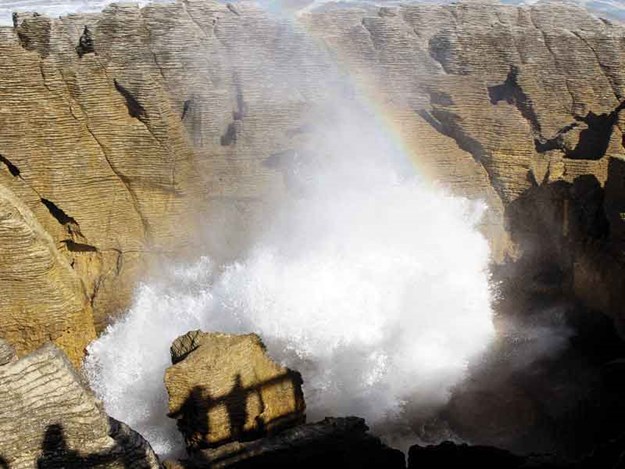
Wandering back down the road from the Pancake Rocks, we had time to check out a deep cavern. Pulling out torches, we climbed the stairs and into the cavern, making our way across a smooth plateau before dropping down and into a narrow tunnel before coming to a dead end. Off went the torches to search for glow-worms. Exploring the cavern was a great way to fill in 20 minutes, if a bit muddy.
Truman Track
Another must-do short walk at Punakaiki is Truman’s Track. Walking through a small piece of coastal rainforest out onto a lookout, we enjoyed the views along the coast. Having timed our walk for low tide, we were able to explore the beach below.
Always hunting for a piece of precious pounamu found on West Coast beaches, we strolled past a high waterfall and around the corner to discover a large gouged-out overhang, another stunning example of the force of the ocean and its effect on the landscape.
West Coast beaches are notoriously dangerous for swimming, so there were several reminders to the kids to take care close to the crashing waves.
Gold mining history
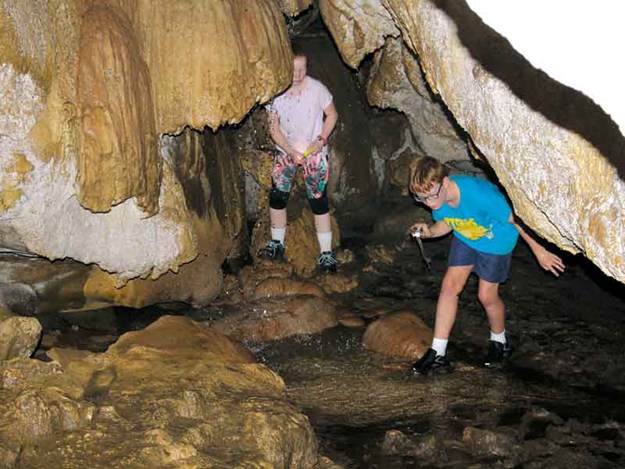
Continuing on our journey, we discovered Mitchells Gully Goldmine tucked away just past Charleston, now a historic site managed by a descendant of the site’s original miner.
After a rundown on the history of mining in the area (who knew that Charleston was once the biggest city in New Zealand?), we set off on the half-hour loop track through the rainforest.
The track follows the old tramline; the technology of the early days evident with the waterwheel and stamping battery. Tunnels, arches, and small caves added to the adventure.
Karamea via Cape Foulwind
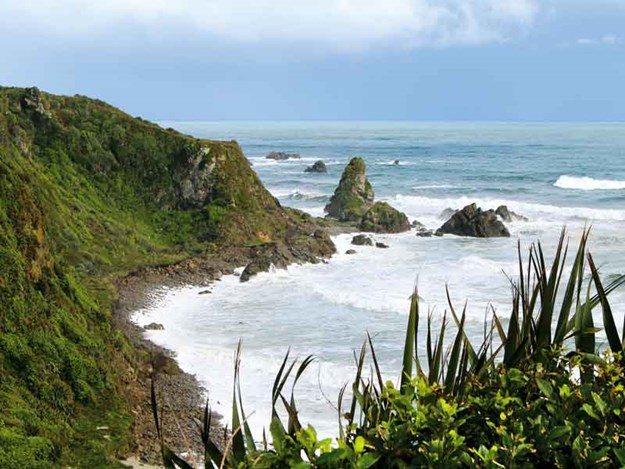
Heading north, we detoured to the aptly named Cape Foulwind where a short walk took us to a viewing platform above the large seal colony. After enjoying 20 minutes observing the resting seals, we hit the road again.
Next stop was Karamea. We arrived just in time to enjoy a spectacular sunset over the estuary and settle in for the night.
Arches, caves, and native birds
Heavy overnight rain again eased enough to enjoy a day of inland exploring. The karst landscape of the upper West Coast lends itself to networks of caves and glorious arch type landforms. Driving into the Oparara Valley included 15km of narrow gravel road and a few blind corners, so it was a relief to reach the carpark.
Oparara Arch
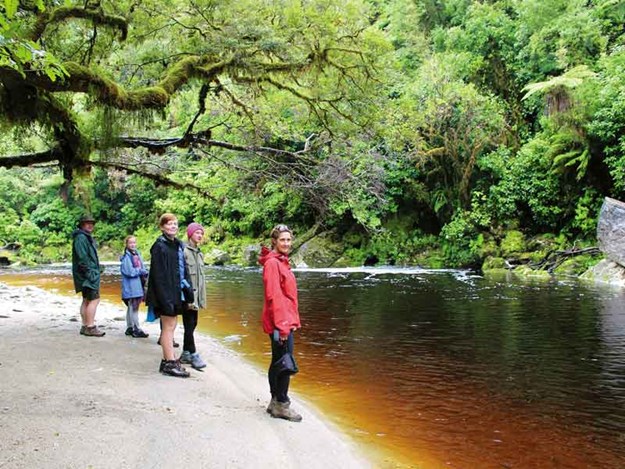
First off was a half-hour walk into the Oparara Arch. An early sighting of whio (blue duck) on the tannin-stained river was a real highlight. With the camera clicking, it was fascinating to watch the pair moving up the river feeding off the rocks.
The walk carried on through the rainforest before reaching a large, long archway, the height and scale of which was impressive.
Moria Gate Arch
Backtracking to the carpark, we kept on walking, a longer loop track taking us to the Moria Gate and Mirror tarn. The lush forest is home to numerous native birds; South Island robins hopped along the track behinds us with no fear.
The track came to a junction and we followed the slightly rougher track a short way. It suddenly disappeared into a small slot in the ground leading us down into a large cavern through which the river flowed—simply stunning.
Retracing our steps, we joined the main loop track again to continue, pausing for a view of the arch from above and then on to the Mirror Tarn, still and beautiful with magic reflections.
A taste of the heaphy
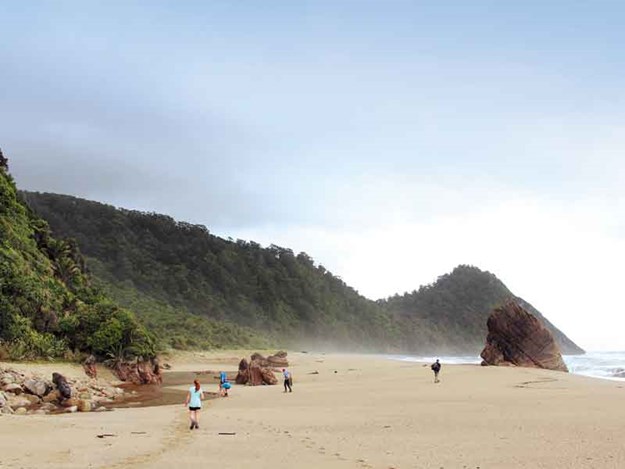
Our next day’s adventure was different but just as stunning. Starting from Kohaihai, 20km north of Karamea, we walked to Scotts Beach on the Heaphy track. It took us an hour to walk into the wild beach.
The prevalence of nikau palms is wonderful and a short loop track through a nikau grove has been recently added close to the carpark. Aside from a curious weka, we had the beautiful beach to ourselves so we spent our time exploring, climbing rocks, playing in a small stream.
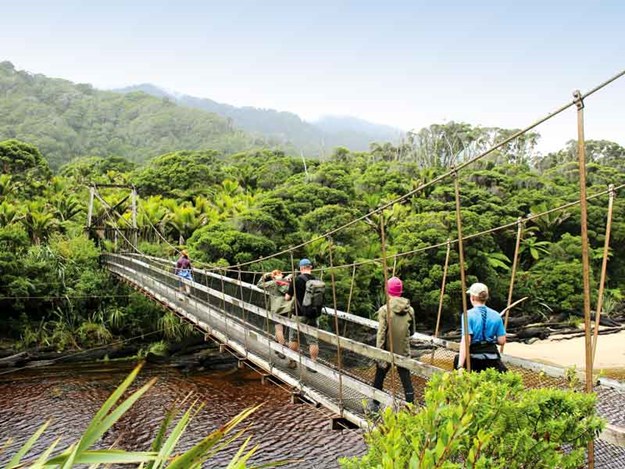
Heading for the mountains
Our journey then saw us heading inland to St Arnaud, and to celebrate, the skies cleared and the sun shone.
A drive to the Mt Roberts carpark and a short walk to a viewing point allowed magnificent views of Lake Rotoiti below, as well as a chance to reminisce about a long-ago winter tramp over the mountains.
Nature recovery
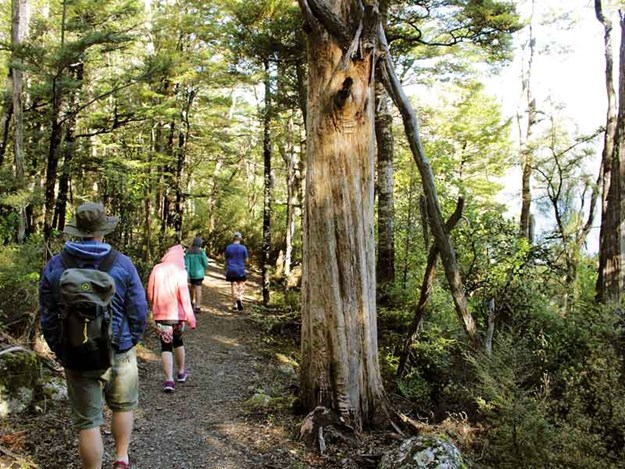
St Arnaud is part of Nelson Lakes National Park and has been part of an ongoing nature recovery project for many years.
As we walked around the peninsula from Kerr Bay to West Bay through the lush beech forest, bellbirds and tui were especially evident, with their wonderful birdsong as they fluttered in trees close to the track. Kaka can often be seen and heard at St Arnaud but not during our short stay.
Water wildlife
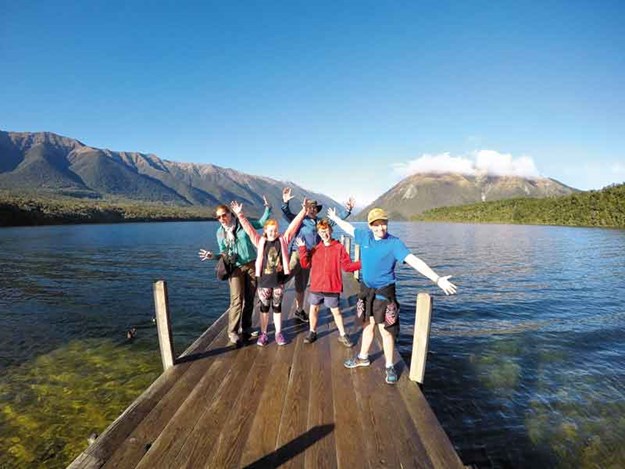
Fascinating for adults and children alike are the gigantic eels of New Zealand waters. At St Arnaud, they are fed off the wharf; the sight of a swarm of eels slipping and sliding around each other below the wharf can be a little unsettling.
Not for the kids, though, who were happy enough to put cat food on the end of a long stick and create a feeding frenzy.
Sunshine capital

Nelson was our final destination, and we spent time catching up with friends in Glenduan and Tahunanui beach. A spare afternoon saw us take in the Founders Heritage Park, a collection of local historic buildings that have been moved to the site, all beautifully restored and housing artefacts and local artists.
Beautifully laid out with activities for the children, it was a great way to spend a couple of hours. ‘Going south’ was not the big mission we thought it might be. Next time, we’ll take the caravan. Roll on summer!





